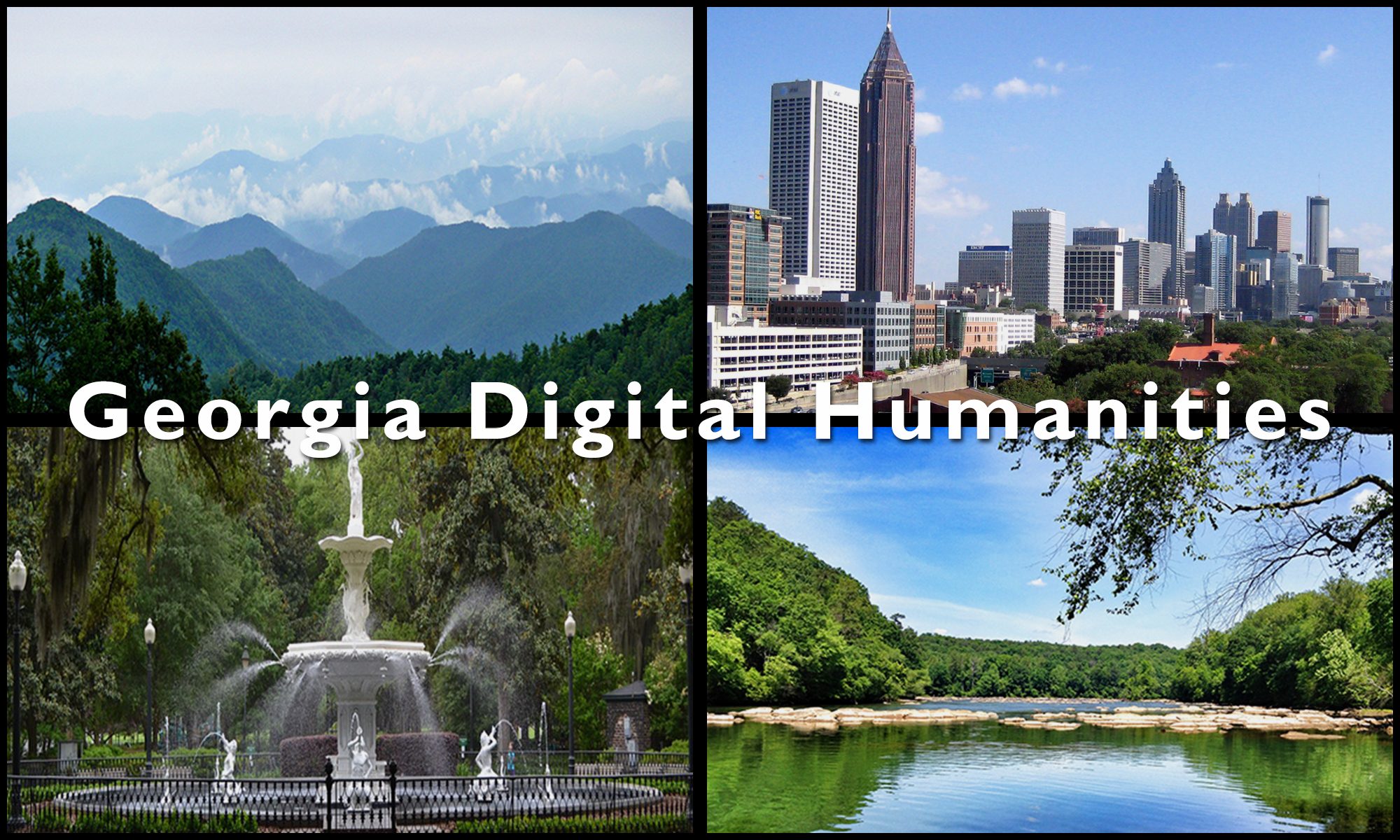Source: Georgia Tech Digital Humanities Lab
URL: I2C Connection Working!
Been a while since the last post! Here it goes! We currently have three students working on the project. We had a fourth last spring, but she has since graduated. For the rest of us left, we now have specialized tasks to help move the project forward on all sides. Here the specialized tasks: Courtney Allen (HCI) works on the physical components of the circuit. Noah Sutter (CS) works on the programming for the buttons and LEDs. Sarah Schoemann (DM) works on the physical fabrication of the quilt. When we last left the project, the LEDs were…
Read More: I2C Connection Working!
CFP for Atlanta Studies Symposium 2019
Source: Atlanta Studies News
URL: CFP for Atlanta Studies Symposium 2019
Call for Proposals Seventh Annual Atlanta Studies Symposium: Climate Change and Atlanta’s Future April 9, 2019 Academy of Medicine, Georgia Institute of Technology Atlanta, Georgia Tweet!function(d,s,id){var js,fjs=d.getElementsByTagName(s)[0],p=/^http:/.test(d.location)?’http’:’https’;if(!d.getElementById(id)){js=d.createElement(s);js.id=id;js.src=p+’://platform.twitter.com/widgets.js’;fjs.parentNode.insertBefore(js,fjs);}}(document, ‘script’, ‘twitter-wjs’); The seventh annual Atlanta Studies Symposium welcomes proposals on any aspect of Atlanta, past, present, or future. Priority will be given to those that directly relate to the conference theme, “Climate Change and Atlanta’s Future.” The Intergovernmental Panel on Climate Change warns that the world has 12 years left to limit global temperature rise to 1.5%C and prevent catastrophic levels of climate change. As a sprawling, car and airplane-intensive region which…
Read More: CFP for Atlanta Studies Symposium 2019
GIS Day 2018
Source: UGA Digital Humanities Initiative
URL: GIS Day 2018
GIS Day at UGA is fast approaching! As part of the celebration, any student, undergraduate or graduate, can submit a map to our annual GIS Day Map Contest. First prize in the undergraduate and graduate captions is $100. All maps will be featured at GIS…
Read More: GIS Day 2018
Halloween Frankenreads Event
Source: UGA Digital Humanities Initiative
URL: Halloween Frankenreads Event
The Frankenreads event was a huge success. With popcorn, pizza, candy, crafts, movies, a…
Read More: Halloween Frankenreads Event
Atlanta Sessions at the 2018 American Studies Association
Source: Atlanta Studies News
URL: Atlanta Sessions at the 2018 American Studies Association
Atlanta Sessions at the 2018 American Studies Association Tweet!function(d,s,id){var js,fjs=d.getElementsByTagName(s)[0],p=/^http:/.test(d.location)?’http’:’https’;if(!d.getElementById(id)){js=d.createElement(s);js.id=id;js.src=p+’://platform.twitter.com/widgets.js’;fjs.parentNode.insertBefore(js,fjs);}}(document, ‘script’, ‘twitter-wjs’); This year’s American Studies Association annual meeting takes place in Atlanta from November 8–11. The conference, to be held at the Westin Peachtree Plaza Atlanta, includes several sessions that interrogate Atlanta’s cultures, its places, and issues facing the city. Noting that W. E. B. Du Bois wrote The Souls of Black Folk while working at Atlanta University, the meeting’s call for proposals invokes Du Bois’s representation of Atlanta as “as a city at a crossroads: it could bow to the seductive but alienating ideals of racial capitalism, or…
Read More: Atlanta Sessions at the 2018 American Studies Association
Update 2: node2vec community detection with a co-occurrence graph
Source: Georgia Tech Digital Humanities Lab
URL: Update 2: node2vec community detection with a co-occurrence graph
Previous post on Louvain On node2vec, we were able to successfully run our weighted co-occurrence graph. After using PCA with TSNE to reduce the dimensions shown, the node2vec model has more well-defined clusters here than on our previous bipartite graph. Another thing to note is that on the right-side visualization, there are only people nodes. You can also check out our d3 visualization here, which allows you to zoom in/out and see the labeled nodes! node2vec on our previous bipartite graph. The blue nodes are people while the red nodes are documents. node2vec on our current graph. The colors are arbitrary.…
Read More: Update 2: node2vec community detection with a co-occurrence graph
Update: Detecting communities with a co-occurrence graph
Source: Georgia Tech Digital Humanities Lab
URL: Update: Detecting communities with a co-occurrence graph
Previous post From our previous post, we’ve discovered that the community detection algorithms were mainly grouping based on document/location. This time, we created a new weighted co-occurrence graph of all the people in all documents, similar to Les Miserables. The weight of an edge tells us the number documents the source and target nodes appeared in together. The graph itself has around the same amount of nodes (~5k) but it has 100 times more edges than nodes (~565k). There were many edges to render and process in a graph which might not be suitable for node2vec or Girvan-Newman. Louvain, however,…
Read More: Update: Detecting communities with a co-occurrence graph
UGA’s Frankenread
Source: UGA Digital Humanities Initiative
URL: UGA’s Frankenread
Read More: UGA’s Frankenread
Brand Yourself: Taking Control of Your Digital Narrative
Source: UGA Digital Humanities Initiative
URL: Brand Yourself: Taking Control of Your Digital Narrative
The Brand Yourself workshop was a huge success. We really hope you were able to make it. If you were not able, no need to worry- we are here to help! A detailed run down of everything the Brand Yourself Workshop covered can be…
Read More: Brand Yourself: Taking Control of Your Digital Narrative
DH Summer Scholars present their work
Source: UGA Digital Humanities Initiative
URL: DH Summer Scholars present their work
Digi’s Digital Humanities Summer Scholars, Katie Curry, Maggie Dryden, Bradley Camacho, Annelle Brunson, Trevor Talmadge, and Jordan Miceli, presented their summer’s work demonstrating the application of digital humanities to projects of their own design. A Portrait of Bondage Katie Curry, a senior majoring in…
Read More: DH Summer Scholars present their work


